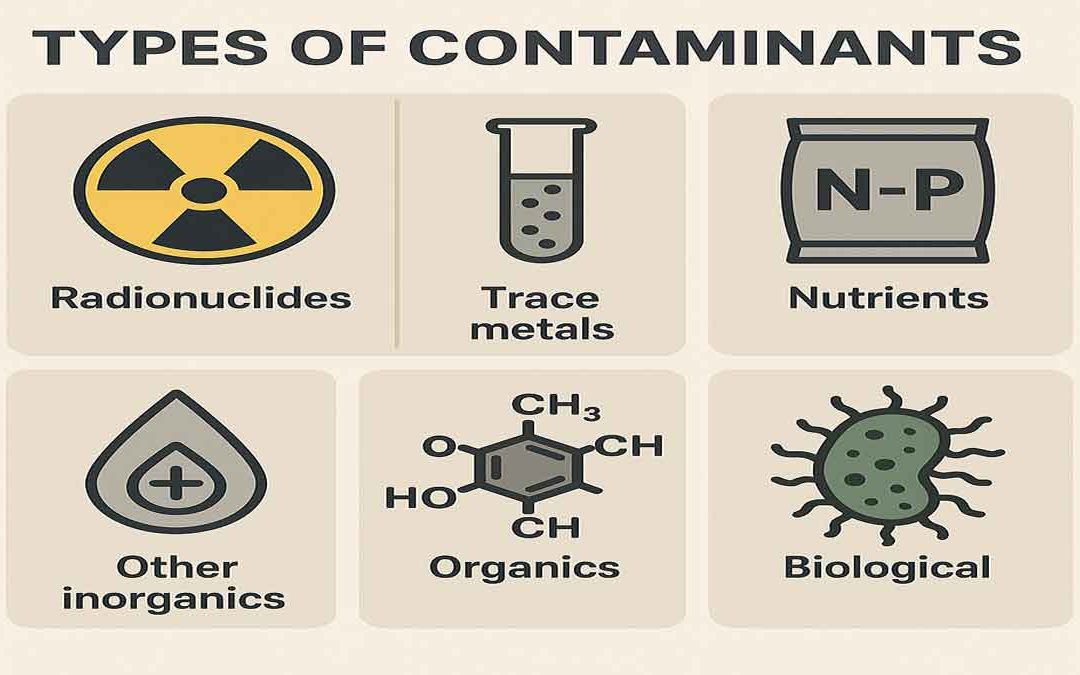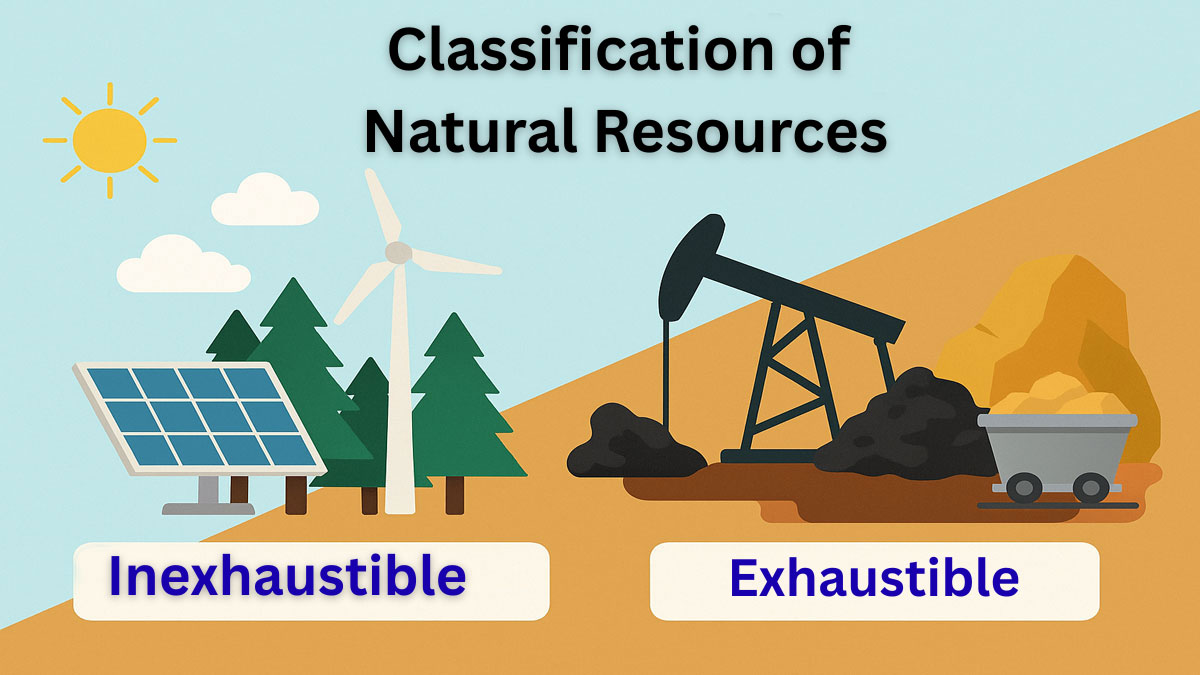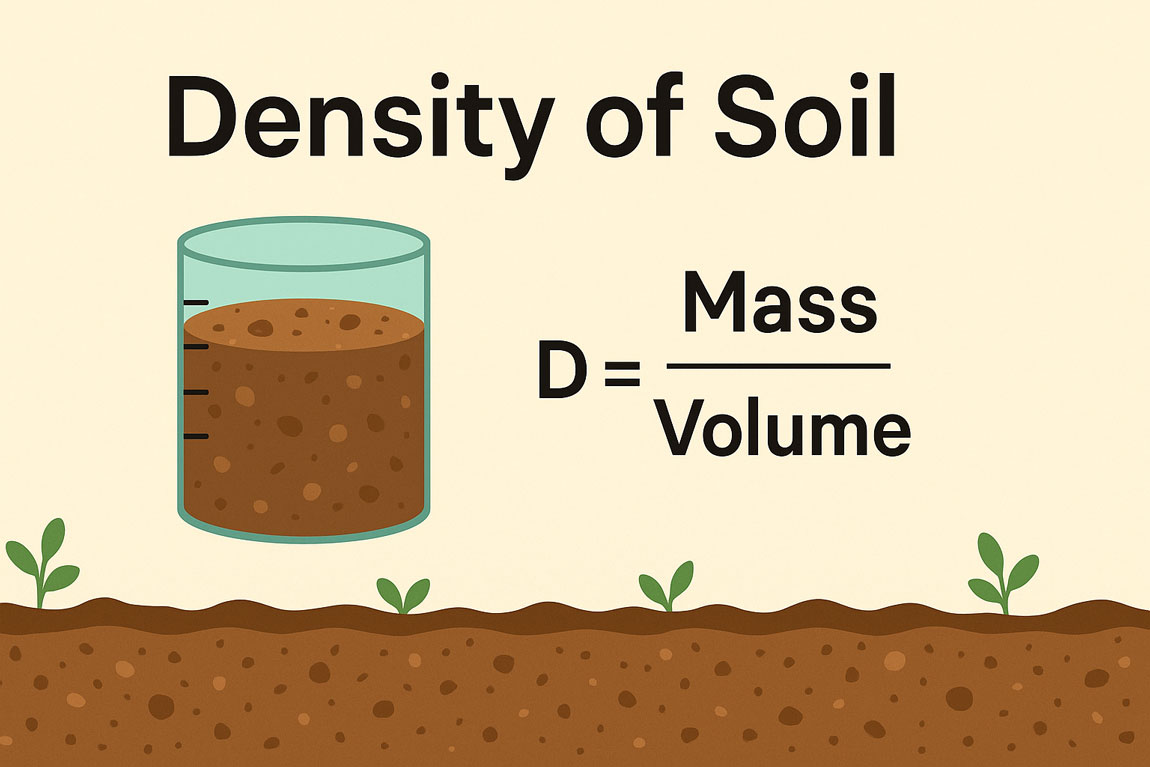What are Contaminants?
Any solutes (contaminants) introduced into the groundwater environment. Contamination is the presence of a constituent, impurity, or some other undesirable element that renders something unsuitable, unfit, or harmful for the physical body, natural environment, workplace, etc.
Types of Contaminants:
Six major categories are,
- Radionuclides
- Trace metals
- Nutrients
- Other inorganics
- Organics and
- Biological.
Radionuclides:
- The nuclear fuel industry is the main source of radioactive contaminants.
- Potential sources occur throughout the nuclear fuel cycle.
- During mining when raw ore is processed 238U, 229Th, 226Ra, and 222Rn are potential contaminants.
- Fuel fabrication, fuel reprocessing and power-generating facilities are other potential sources.
- Colorado, New Mexico, Utah, Wyoming, Saskatchewan and Ontario are the U producing regions of North America.
- The nuclear industry is very closely controlled and monitored by federal, state and provincial authorities.
Trace metals:
- Trace metals are a natural component of all groundwaters and represent the largest group of elements in the periodic table.
- Additional sources include (1) mining effluents, (2) industrial wastewaters, (3) urban runoff, (4) agricultural wastes and fertilizers, and (5) fossil fuels.
- Some trace metals (B, Cu, Fe, Zn) are essential for health but others have a tendency to accumulate in the body (or bioaccumulate in organisms low in the food chain) from sources at relatively low concentrations.
- The 13 trace metals that make the EPA list of 129 priority pollutants are: Ag, As, Be, Cd, Cr, Cu, Hg, Ni, Pb, Sb, Se, Tl, Zn.
Nutrients:
- Nutrients are ions and compounds containing nitrogen and phosphorus.
- The dominant nitrogen species in groundwater in NO3– and to a lesser extent NH4+.
- Phosphorus is less important as a contaminant because of its low solubility and tendency to readily sorb onto solids.
- Sources of N and P are largely agricultural including the use of fertilizers and the cultivation of virgin soils (when large quantities of N are released.)
- Sewage (N) and municipal wastewaters (P) are also sources of nutrients.
Other inorganics:
- This group of “contaminants” includes the major ions usually present in groundwater.
- Extremely high concentrations render water unsuitable for human consumption, animal watering and many industrial uses.
- Health related concerns are low for this group of contaminants but high concentrations of Na+ can disrupt blood chemistry and lower Na+ concentrations may lead to hypertension.
- Fluoride a good example of a trace non-metal contaminant. At low concentrations F– has the beneficial effect of reducing tooth decay. At higher concentrations (only x5 higher) F– can lead to serious health problems including goitre and fluoridosis.
Organics:
- Contamination of groundwater by organic compounds is a consequence of the large number of petroleum products and man-made organics in common use.
- The EPA list of 131 priority pollutants contains 116 organic compounds, 13 trace metals, asbestos and cyanide. Over 90% are organics.
- The EPA divides the organics into four groups based on the methods used for analysis but ultimately the analytical tool is gas chromatography-mass spectrometry (GC-MS):
- Base-neutral extractables (47)
- Acid extractables (12)
- Volatiles (32)
- Pesticides and PCBs (25)
Biological:
- The important biological contaminants are:
- Pathogenic bacteria (Fecal streptococci, Fecal colliforms, Escherichia coli, Shigella dysenteriae, Salmonella typhi, Vibrio cholerae)
- Viruses (enteroviruses, hepatitis A virus, polio virus and rotavirus )
- Parasites (Giardia, Entamoeba, Cryptosporidium )
- The main sources are (1) land disposal of sewage and septic tanks, (2) leachates from sanitary landfills and (3) agricultural wastes.
- The contaminants are particulate rather than dissolved, transport distances are limited and problems tend to be related to localized sources.






